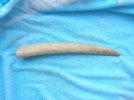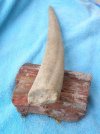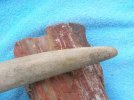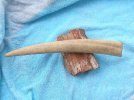- Joined
- Apr 4, 2010
- Messages
- 251
I received a 16" fossilized walrus tusk from a client who would like it to be used as handle, scales, material on his next knife. This tusk came from Alaska and was picked up on a beach. It is not like any material I have used . It looks like bleached stone and the interior is solid. I used a knife to pick at the interior and it seems rather soft and chalky. Can this material be used as is for a handle or would it need to be stabilized. If anyone has worked with similar material I would appreciate any insight you have.
Thanks
Tim
Thanks
Tim






